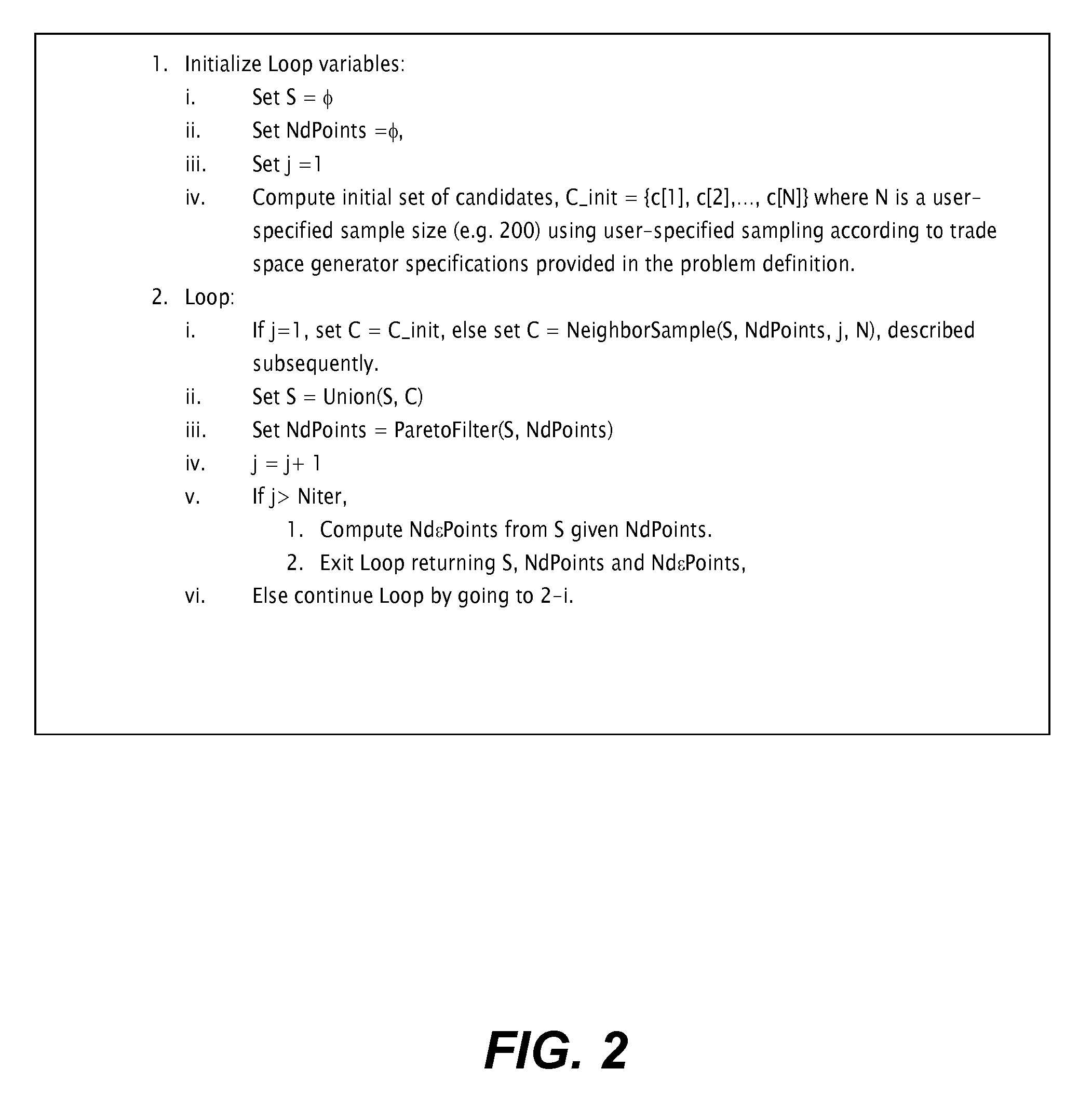Multi-objective optimization within a constraint management system
a management system and multi-objective technology, applied in the field of parametric engineering modeling, can solve the problems of inability to search exhaustively such trade spaces, inability to easily manage so many cases, and inability to search exhaustively, etc., to achieve easy and robust management, easy and flexible search of large design spaces, and easy switching the normal role of inpu
- Summary
- Abstract
- Description
- Claims
- Application Information
AI Technical Summary
Benefits of technology
Problems solved by technology
Method used
Image
Examples
Embodiment Construction
[0019]In an exemplary embodiment of the present invention, a trade space comprises: 1) a set of independent variables, x1, x2, . . . , xn; 2) a set of regions of interest for the independent variables, said regions being specified either as box-constraints, (e.g., a1≦x1≦b1), or general deterministic or stochastic operations (e.g., x2 is uniformly distributed between x1−a2 and x1+b2); 3) a set of objectives, y1, . . . , ym; and 4) a set of equality constraints, R_j, that form an implicit mapping from the set of independent variables (x-space) to the set of objectives (y-space). The constraints may be specified by the user. For example, during the conceptual design phases of a space launch system one is concerned with multiple performance metrics such as orbit altitude and inclination, payload to orbit, vehicle weight, re-usability, as well as detailed considerations of drag, lift, and stability. One is also concerned with multiple cost metrics, including development cost, first unit ...
PUM
 Login to View More
Login to View More Abstract
Description
Claims
Application Information
 Login to View More
Login to View More - R&D
- Intellectual Property
- Life Sciences
- Materials
- Tech Scout
- Unparalleled Data Quality
- Higher Quality Content
- 60% Fewer Hallucinations
Browse by: Latest US Patents, China's latest patents, Technical Efficacy Thesaurus, Application Domain, Technology Topic, Popular Technical Reports.
© 2025 PatSnap. All rights reserved.Legal|Privacy policy|Modern Slavery Act Transparency Statement|Sitemap|About US| Contact US: help@patsnap.com



